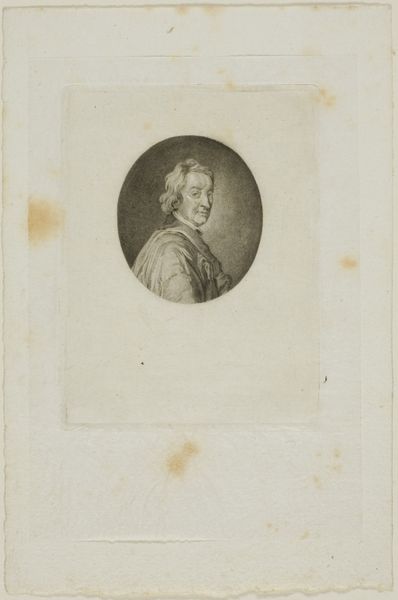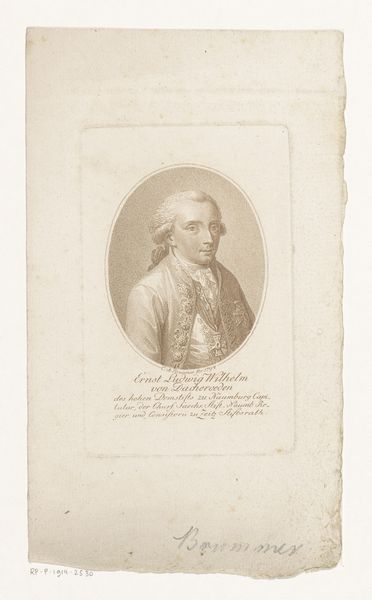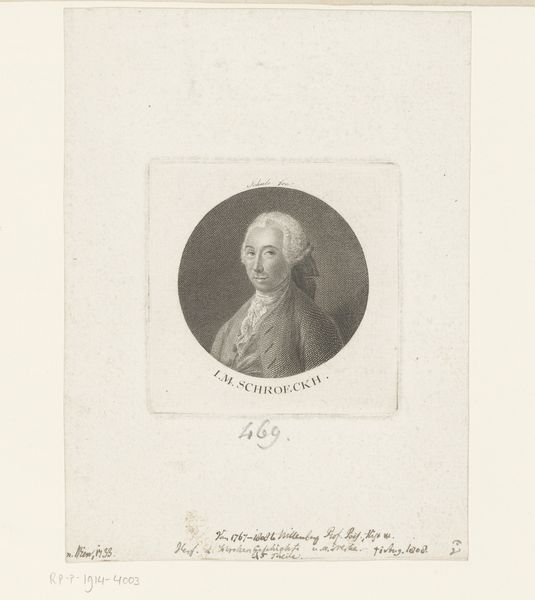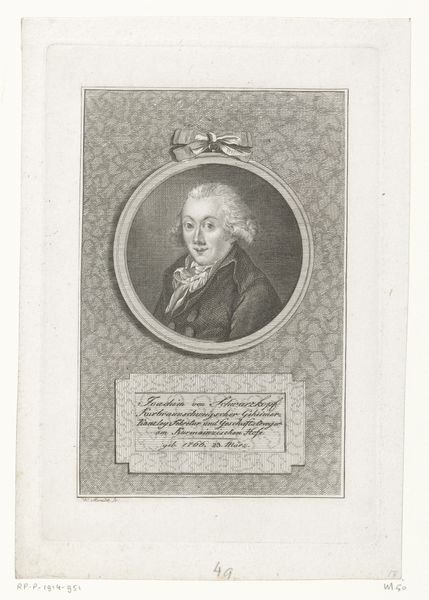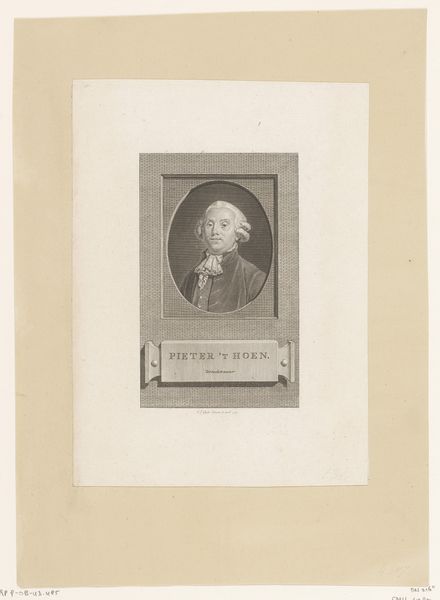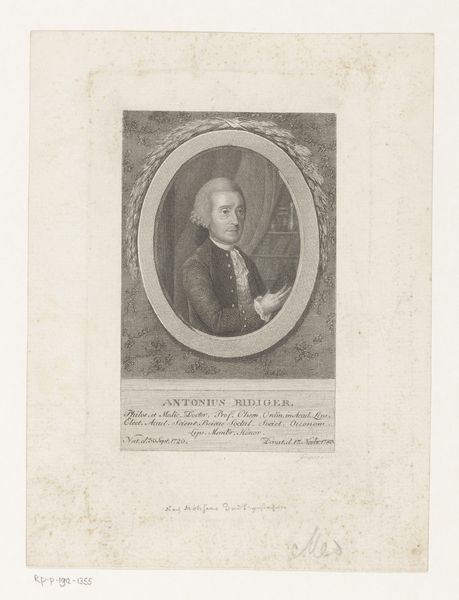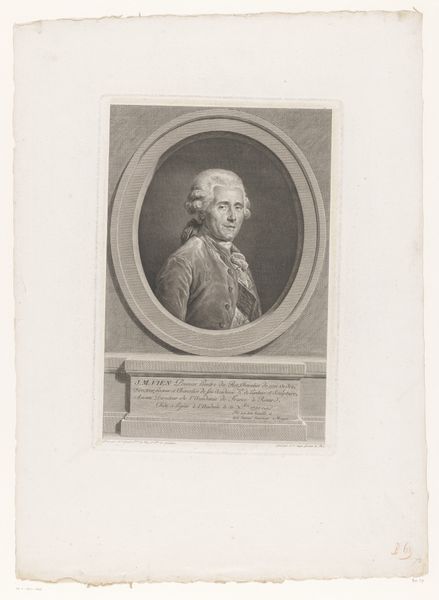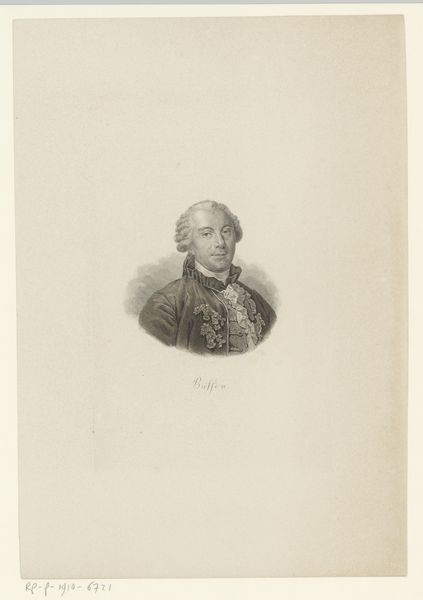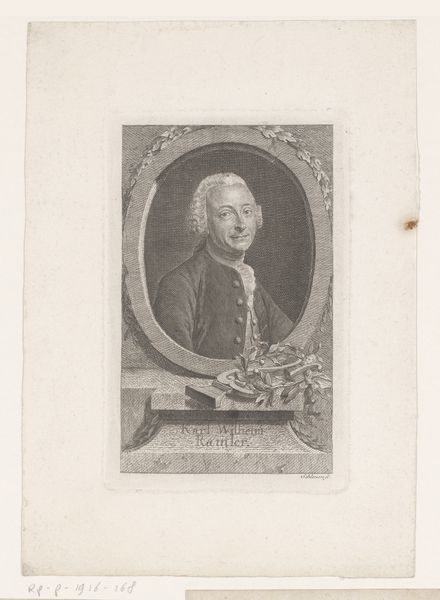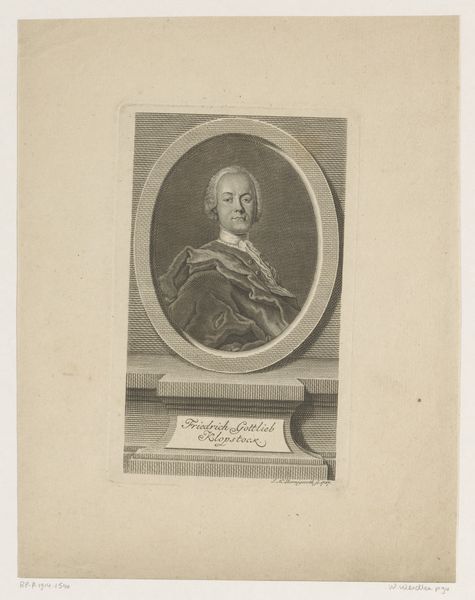
print, engraving
#
portrait
#
pencil drawn
#
medal
#
aged paper
#
16_19th-century
#
neoclassicism
# print
#
pencil sketch
#
old engraving style
#
watercolour illustration
#
academic-art
#
engraving
Dimensions: height 83 mm, width 103 mm
Copyright: Rijks Museum: Open Domain
Curator: This engraving presents a portrait of Carl Theodor Anton Maria von Dalberg, dating from somewhere between 1775 and 1825. Editor: It’s austere. Even with the decorative medal, there's a distinct lack of warmth, a formal almost distancing gaze. It evokes the restrained sensibilities of the era. Curator: Indeed. This print resonates with the Neoclassical movement’s focus on order and rationality. We must remember Dalberg’s prominent role in the Church and politics of the Holy Roman Empire at a turbulent time. Images like these functioned within a complex framework of power and legitimacy. Editor: Precisely. His gaze feels pointed but, at the same time, blank, reflective of the turmoil. While portraiture can certainly represent a likeness, in this setting it conveys a status or, perhaps more subtly, conveys privilege at a time of unrest. Curator: Considering it is a print allows us to speculate about the distribution of imagery like this; prints can reproduce widely to influence opinion, to confirm an already established position, or perhaps to cement authority. What narratives did this image intend to convey at the time? Editor: I wonder what people thought about Dalberg at the time of viewing this engraving. And the circumstances surrounding how and why such an image would have been originally commissioned and for what use. Its power relies on our assumptions, or rather society's understanding, of who Dalberg was, how his presence made the commoners feel. Curator: Analyzing portraits like this invites critical inspection into not only the artwork itself, but into the broader systems of patronage and image circulation of the 18th century. Dalberg clearly wielded cultural capital and the production of his image speaks to this power. Editor: These historical prints, with their seemingly simple representation, continue to echo our social structure today, reminding us of how those in authority employ images as both mirrors and tools of governance.
Comments
No comments
Be the first to comment and join the conversation on the ultimate creative platform.
